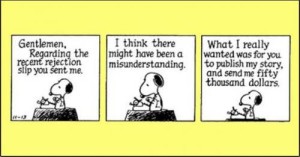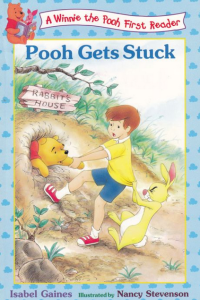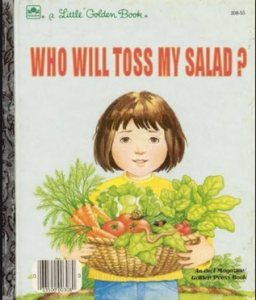You’ve written query letters to every publisher and agent, attended countless “How to Get Published” workshops and have read dozens of books on the subject. You’ve even sent birthday cards to every relative of Simon and Schuster.
Sadly, with no results.
It’s time to seriously consider self-publishing. Here are some of the benefits and drawbacks of self-publishing your work.
BENEFITS
Higher royalty rates
Generally speaking, traditionally published authors receive approximately 15-20 percent of net revenues. After you factor in the costs of manufacture, design, promotion (if you’re lucky enough to have a publisher that actually promotes your work) and distribution that usually comes out to less than a buck a book. When you self-publish you keep 100 percent of net revenues. For example, let’s say it costs $5 to produce your book and you sell it for $15. You keep $10/book. Even after you figure in the cost of basic expenses like: cover and interior design, editing and digital marketing most books break even at around 200 paperback sales. Costs to produce and distribute eBooks are far less, thus making your break-even point even lower.
You can be a control freak
You make all the decisions. The book you produce is exactly the book you want to produce. If you don’t like the cover your designer did, have it redone. If you don’t like some of your editor’s suggestions, don’t use ‘em. Everything is in your hands, period.
No pressure
Most traditional publishers have little patience. They want results (i.e. sales) quickly. If your book doesn’t do well in the first six months, it’s very possible you’ll be forgotten. When you self-publish, you’ll only be accountable to you. Finding an audience for your work can take a long time. It’s a marathon, not a sprint.
You can control costs
Most published authors have absolutely no say in how their publisher spends money. Since authors are paid on net revenue or profit, this can be a big problem. All expenses incurred getting your book to market will be figured against your future earnings.
Turnaround time
Most publishers can take up to two years to get a project done. If you self-publish, you can often get to market in weeks. This is especially important with books that have a newsworthy tie-in.
DRAWBACKS
Publishers have great contacts
When you go through a publisher, they usually have great relationships with major publications and media outlets. However, the landscape is rapidly changing and there are some great resources to get your book some great pub.
There is a whole lot of crap out there
Self-publishing, especially with the rise in popularity of eBooks, has produced some works of, let’s say, dubious distinction. Making sure your book stands out and looks professional is more important than ever.
Publishers can make your book better
Good publishers make good books. Generally speaking, they are experts in editing, manufacturing and distribution. Authors are best served heeding their expert advice.
If you would like to talk to a self-publihing expert, please email david@eckhartzpress.com or rick@eckhartzpress.com.







